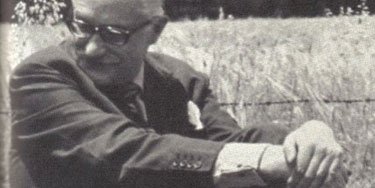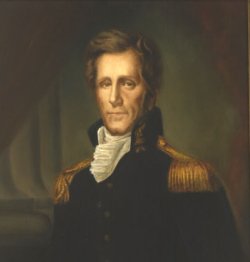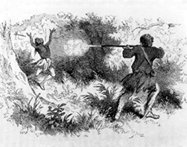Archive for April, 2016
26 Apr 2016


Asli Aydintasbas, a Turkish journalist, tells us that he is rooting for Trump, because he thinks we deserve him.
[W]hen my American friends ask what I think of Donald Trump, I tell them outright: “I sure hope he gets to be the president.†They tend to look at me with horror, and search my face for signs that I’m joking. “So you get a little taste of what we have all been going through in the rest of the world,†I add by way of explanation.
I really cannot wait to see the first bilateral meeting between Vladimir Putin and Trump, the initial handshake with Recep Tayyip Erdoğan or the sunny photo with Venezuela’s Nicolás Maduro. The meeting with South Africa’s Jacob Zuma will be fun and the White House visit with Azerbaijan’s Ilham Aliyev will undoubtedly be overshadowed by a next-door meeting of the glamorous first ladies.
Politics — and American politics particularly — has long been too scripted, too sanitized. Isn’t it time to inject some life into the boring song and dance of international diplomacy?
The majority of people on this planet live under corrupt and authoritarian regimes, some of which are close allies of Washington. So now you are getting yours too — what’s the big deal! I tell my panicked U.S. friends.
Besides, think of the upsides to a Trump presidency. What a breath of fresh air it would be to have an undiplomatic, swaggering U.S. president who could, for example, comment about Angela Merkel’s hair, joke about the robe of the Saudi king, or finally ask the French president Hollande about his love life. Politics — and American politics particularly — has long been too scripted, too sanitized. Isn’t it time to inject some life into the boring song and dance of international diplomacy?
But, of course, if the experiences of Turkey, Hungary, Venezuela and the rest of the world are anything to go by, the fun doesn’t end with diplomatic eccentricity — there will be laws to change, judges to appoint, newspapers to reckon with, elites to sacrifice at the altar, and businesses to shape up. At each and every turn, you would be surprised how many gather to watch the heads roll.
Read the whole thing.
26 Apr 2016


Bronze Age burial.
Genome Web summarizes an interesting paper on “Punctuated bursts in human male demography…” published yesterday in Nature Genetics.
[R]esearchers from the Wellcome Trust Sanger Institute and elsewhere analyzed the Y chromosomes of more than 1,200 men from 26 populations using data collected by the 1000 Genome Project. After examining about 65,000 variants contained within this dataset, the researchers constructed a phylogenetic tree — a tree, they noted, that more closely resembled a bush in some spots.
“This pattern tells us that there was an explosive increase in the number of men carrying a certain type of Y chromosome, within just a few generations,” co-lead author Yali Xue from the Sanger Institute said in a statement. “We only observed this phenomenon in males, and only in a few groups of men.”
Xue and her colleagues drew upon a set of 1,244 Y chromosomes from men belonging to 26 world populations. …
[T]he branching patterns they observed among several lineages indicated extreme expansion some 50,000 years to 55,000 years ago as well as within the last few thousand years. The expansion 50,000 years to 55,000 years ago was also linked to an increase in lineages outside of Africa and could, they suggested, reflect the expansion of Eurasian populations.
It also supports the previously proposed notion that haplogroup E, which is the most predominant one in Africa, actually arose outside the continent and arrived there through gene flow from Asia some 50,000 years to 80,000 years ago.
The phylogenetic tree also hints that lineages that have spread throughout Eurasia may have first diversified within South and Southeast Asia. …
[These branching patterns] suggested that… bursts of male population growth might correspond to historical events. For instance, they noted an expansion of the Q1a-M3 lineage in the Americas some 15,000 years ago, which roughly corresponds with initial peopling there. In addition, they found that both the Eb1-M180 lineages in sub-Saharan Africa underwent an expansion about 5,000 years ago at about the time of the Bantu expansion. Finally, within Western Europe, they said the expansion of the R1b-L11 lineages some 4,800 years to 5,900 years ago could be associated with the rise of the Bronze Age Yamnaya culture.
The researchers were less certain about the reasons behind some of the other late expansions they observed.
“The best explanation is that they may have resulted from advances in technology that could be controlled by small groups of men,” the Sanger Institute’s Chris TylerÂ-Smith added. “Wheeled transport, metal working, and organized warfare are all candidate explanations that can now be investigated further.”
——————
Leave it to newspapers to popularize this kind of thing. The Telegraph takes the last portion of the reported findings, the part relevant to Merry Old England, and runs with it.
Half of Western European men are descended from one Bronze Age ‘king’ who sired a dynasty of elite nobles which spread throughout Europe, a new study has shown.
The monarch, who lived around 4,000 years ago, is likely to have been one of the earliest chieftains to take power in the continent.
He was part of a new order which emerged in Europe following the Stone Age, sweeping away the previous egalitarian Neolithic period and replacing it with hierarchical societies which were ruled by a powerful elite.
It is likely his power stemmed from advances in technology such as metal working and wheeled transport which enabled organised warfare for the first time.
Although it is not known who he was, or where he lived, scientists say he must have existed because of genetic variation in today’s European populations.
Read the whole thing.
25 Apr 2016


Joel Hirst looks on as the lights begin to go off in Venezuela. That country has arrived recently at a point resembling the closing chapters of Ayn Rand’s Atlas Shrugged.
Tonight there are no lights. Like the New York City of Ayn Rand’s “Atlas Shruggedâ€, the eyes of the country were plucked out to feed the starving beggars in abandoned occupied buildings which were once luxury apartments. They blame the weather – the government does – like the tribal shamans of old who made sacrifices to the gods in the hopes of an intervention. There is no food either; they tell the people to hold on, to raise chickens on the terraces of their once-glamorous apartments. There is no water – and they give lessons on state TV of how to wash with a cup of water. The money is worthless; people now pay with potatoes, if they can find them. Doctors operate using the light of their smart phones; when there is power enough to charge them. Without anesthesia, of course – or antibiotics, like the days before the advent of modern medicine. The phone service has been cut – soon the internet will go and an all-pervading darkness will fall over a feral land.
All it would take is the election of one more radical Progressive democrat like Bernie Sanders and the USA could share in the full Venezuela experience.
25 Apr 2016


Nicolás Gómez Dávila: “The reactionary today is merely a traveler who suffers shipwreck with dignity.”
The New York Times tame house-conservative Ross Douthat finds himself yearning these days, as the gods of establishment Progressivism and Conservatism seem to be failing, for a higher-proof version of right-wing inspiration. Of course, being Ross Douthat, he is careful to stipulate that the Reactionary philosophy he yearns for should be violative of left-wing shibboleths but, please! not too transgressive.
[W]hile reactionary thought is prone to real wickedness, it also contains real insights. … Reactionary assumptions about human nature — the intractability of tribe and culture, the fragility of order, the evils that come in with capital-P Progress, the inevitable return of hierarchy, the ease of intellectual and aesthetic decline, the poverty of modern substitutes for family and patria and religion — are not always vindicated. But sometimes? Yes, sometimes. Often? Maybe even often.
Both liberalism and conservatism can incorporate some of these insights. But both have an optimism that blinds them to inconvenient truths. The liberal sees that conservatives were foolish to imagine Iraq remade as a democracy; the conservative sees that liberals were foolish to imagine Europe remade as a post-national utopia with its borders open to the Muslim world. But only the reactionary sees both.
Is there a way to make room for the reactionary mind in our intellectual life, though, without making room for racialist obsessions and fantasies of enlightened despotism? So far the evidence from neoreaction is not exactly encouraging.
Yet its strange viral appeal is also evidence that ideas can’t be permanently repressed when something in them still seems true.
Maybe one answer is to avoid systemization, to welcome a reactionary style that’s artistic, aphoristic and religious, while rejecting the idea of a reactionary blueprint for our politics. From Eliot and Waugh and Kipling to Michel Houellebecq, there’s a reactionary canon waiting to be celebrated as such, rather than just read through a lens of grudging aesthetic respect but ideological disapproval.
A phrase from the right-wing Colombian philosopher Nicolás Gómez Dávila could serve as such a movement’s mission statement. His goal, he wrote, was not a comprehensive political schema but a “reactionary patchwork.†Which might be the best way for reaction to become something genuinely new: to offer itself, not as ideological rival to liberalism and conservatism, but as a vision as strange and motley as reality itself.
By “reactionary,” of course, Ross Douthat is referring to beyond-the-pale forms of anti-Progressive, anti-Liberal political thought which reject such core principles of democratic modernism as Democracy, Pacifism, Internationalism, and Egalitarianism.
24 Apr 2016


Old Hickory
Andrew Jackson was a hero. While still a boy and a prisoner of war captured by the British, he stubbornly refused to clean an enemy officer’s boots, suffering instead a retaliatory slash with a sabre, which left scars on his hand, face, and psyche which he bore all his life.
Orphaned at he age of 14, he educated himself, reading law while working at a saddle-maker’s shop. He taught school, practiced law, and his extraordinary abilities soon manifested themselves. He rose, even as a young man, quickly to every kind of leadership position in frontier Tennessee. in 1796, he became that new state’s first representative in Congress, and the next year was promoted to the Senate. He became commander of the state’s militia in 1801.
In 1814, he defeated the Creek Indians at the Battle of Horseshoe Bend. And in January of 1815, he won perhaps the most astonishing and decisive American military victory of all-time at New Orleans. Outnumbered by more than two-to-one by veteran elite British officers and regulars fresh from the Peninsular War, where they had defeated the same French infantry which had conquered all of Europe, Jackson carefully deployed an extremely mixed force made up of American regulars; Tennessee, Mississippi, and Louisiana militia; and even Baratarian pirates behind three hastily constructed lines of earthworks. Jackson successfully obliged the British to attack frontally, and arranged to take the advancing British under indirect fire before they were even within sight of his position. The results were astonishing. The British took more than 2000 casualties. Both the Commanding General Pakenham and his second-in-command were mortally wounded. The American side had 62 casualties, and only 13 killed. Never elsewhere in history did such an apparently disadvantageous mismatch of forces deliver such a one-sided victory for the underdog.
Later, in national politics, Jackson led a libertarian, populist revolution, capturing the presidency, reining in Federal expansion in favor of individual and state’s rights, facing down nullification and secessionism, shutting down the second US Bank, and establishing a long 30 years of political dominance by his party, which ended only with the election of Lincoln, Civil War, and the armed conquest of the Southern states by the Federal government.
Barack Obama is proving himself once again the vengeful upstart of mixed race determined to punish white America by supplanting its heroes and symbols with black replacements and icons of the radical left.
Jackson is to be set aside in favor of Harriet Tubman, an unprofitable and unsaleable family servant from Maryland who preferred to decamp from her domestic chores to New York State, where she could instead give speeches, be fawned over, and live on the bounty of Northern radicals. Tubman was illiterate and the few factual details known of her life did not prevent the publication in recent decades of a whole series of hagiographic biographies intended to inflate her into a major national figure. It has been remarked, more than once, that school children today are likely to hear a lot more about Harriet Tubman than about George Washington.
The announcement that Tubman’s unattractive visage would be replacing General Jackson’s on the $20 was widely hailed by Quisling conservatives, eager to avoid becoming the objects of racial accusation, as a victory for private gun possession (apparently, when leading some of her relatives out of Maryland, Harriet Tubman carried a revolver which she used to threaten to execute on the spot any of her liberated beneficiaries who happened to try to change their minds about relocating to the North) and Republicanism, carefully overlooking the obvious fact that the Republican Party of the 1850s was the party of radicalism, statism, and leftism, precisely what the Democrat Party is today; while today’s Republican Party is the party of limited government, of individual and states’ rights, of strict constructionism, in fact, the true heir to the philosophy of Andrew Jackson.
Nobody in the Conservative Movement is defending President Jackson these days, except for Pat Buchanan and, deep, deep in the fever swamp, Alexander Hart at Peter Brimelow’s VDare.
24 Apr 2016


Pieter Hintjens, 1962-
Pieter Hintjens is a (half-Scottish) Belgian software developer, aged 53, who is suffering from metastasized bile duct cancer. Being who he is, he naturally published on his blog a “protocol,” explaining his identity and circumstances and indicating how other people and he himself ought, in his view, to deal with the situation.
The contemporary supergeek is an unusual and exotic variant subspecies of humanity, and his protocol, I thought, illustrates particularly vividly that subgroup’s characteristic strengths and weaknesses.
I am, finally, so glad I never quit Belgium. This country allows for death on demand, for patients who are terminal or have a bad enough quality of life. It takes three doctors and a psychiatrist, in the second case, and four weeks’ waiting period. In the first case, it takes one doctor’s opinion.
My dad chose this, and died on Easter Tuesday. Several of us his family were with him. It is a simple and peaceful process. One injection sent him to sleep, into a coma. The second stopped his heart. It was a good way to die, and though I didn’t know I was sick then, one I already wanted.
I’m shocked that in 2016 few countries allow this, and enforce the barbaric torture of decay and failure. It’s especially relevant for cancer, which is a primary cause of death. Find a moment in your own jurisdiction, if it bans euthanasia, to lobby for the right to die in dignity.
23 Apr 2016


The New York Post points out that, but for the publication of his plays in the First Folio by his friends Heminges and Condell, half the plays that came down to us could have been lost.
April 23 marks the 400th anniversary of the death of William Shakespeare. The world will celebrate him as the greatest writer in the history of the English language. But his lasting fame wasn’t inevitable. It almost did not happen.
He was born in 1564 and died in 1616 on his 52nd birthday. A celebrated writer and actor who had performed for Queen Elizabeth and King James, he wrote approximately 39 plays and composed five long poems and 154 sonnets. By the time of his death, he had retired and was considered past his prime.
By the 1620s, his plays were no longer being performed in theaters. On the day he died, no one — not even Shakespeare himself — believed that his works would last, that he was a genius or that future generations would hail his writings.
He hadn’t even published his plays — during his lifetime they were considered ephemeral amusements, not serious literature. Half of them had never been published in any form and the rest had appeared only in unauthorized, pirated versions that corrupted his original language.
Enter John Heminges and Henry Condell, two of Shakespeare’s friends, fellow actors and shareholders in the King’s Men theatrical company. In his will he left them money to buy gold memorial rings to remember him. By about 1620, they conceived a better way to honor him — one that would make them the two most unsung heroes in the history of English literature. They would do what Shakespeare had never done for himself — publish a complete, definitive collection of his plays.
Heminges and Condell had up to six types of sources available to them: Shakespeare’s original, handwritten drafts; manuscript “prompt books†copied from the drafts; fragment “sides†used by the actors and containing only the lines for their individual parts; printed quartos — cheap paperbound booklets — that published unauthorized and often wildly inaccurate versions of half the plays; after-the-fact memorial reconstructions by actors who had performed in the plays and later repeated their lines to a scribe hired by Heminges and Condell; and the editors’ own personal memories.
Today, no first-generation sources for the plays exist. None of Shakespeare’s original, handwritten manuscripts survive — not a play, act, scene, page of dialogue or even a sentence. Without Heminges and Condell, half of the plays would have been lost forever.
They got to work after the bard’s death. At the London print shop Jaggard & Son, workers set the type by hand, printed the sheets one by one and hung them on clotheslines for the ink to dry. The process was methodical and slow, done by hand. It took two years.
When at last the First Folio was finished, it was a physically impressive object. At more than 900 pages, it had size and heft. The tallest copies, right off the press, untrimmed by the printer’s plow, measured 13½ by 8¾ inches.
Published in London in 1623, “Mr. William Shakespeare’s Comedies, Histories & Tragedies†revolutionized the language, psychology and culture of Western civilization. Without the First Folio, published seven years after the bard’s death, 18 iconic works — including “Macbeth,†“Measure for Measure,†“Julius Caesar,†“Antony and Cleopatra,†“Twelfth Night,†“The Winter’s Tale†and “The Tempest†— would have been lost. …
Without the First Folio, his evolution from poet to secular saint would never have happened. The story of that book is an incredible tale of faith, friendship, loyalty and chance. Few people realize how close the world came, in the aftermath of Shakespeare’s death, to losing him.
Today, it is one of the most valuable books in the world. In October 2001, one of them sold for more than $6 million. Of the 750 copies printed, two-thirds of them have perished over the last 393 years. Two hundred thirty-five survive.
23 Apr 2016


Hans von Aachen, St. George Slaying the Dragon, c. 1600, Private Collection, London
From Robert Chambers, The Book of Days, 1869:
Butler, the historian of the Romish calendar, repudiates George of Cappadocia, and will have it that the famous saint was born of noble Christian parents, that he entered the army, and rose to a high grade in its ranks, until the persecution of his co-religionists by Diocletian compelled him to throw up his commission, and upbraid the emperor for his cruelty, by which bold conduct he lost his head and won his saintship. Whatever the real character of St. George might have been, he was held in great honour in England from a very early period. While in the calendars of the Greek and Latin churches he shared the twenty-third of April with other saints, a Saxon Martyrology declares the day dedicated to him alone; and after the Conquest his festival was celebrated after the approved fashion of Englishmen.
In 1344, this feast was made memorable by the creation of the noble Order of St. George, or the Blue Garter, the institution being inaugurated by a grand joust, in which forty of England’s best and bravest knights held the lists against the foreign chivalry attracted by the proclamation of the challenge through France, Burgundy, Hainault, Brabant, Flanders, and Germany. In the first year of the reign of Henry V, a council held at London decreed, at the instance of the king himself, that henceforth the feast of St. George should be observed by a double service; and for many years the festival was kept with great splendour at Windsor and other towns. Shakspeare, in Henry VI, makes the Regent Bedford say, on receiving the news of disasters in France:
Bonfires in France I am forthwith to make
To keep our great St. George’s feast withal!’
Edward VI promulgated certain statutes severing the connection between the ‘noble order’ and the saint; but on his death, Mary at once abrogated them as ‘impertinent, and tending to novelty.’ The festival continued to be observed until 1567, when, the ceremonies being thought incompatible with the reformed religion, Elizabeth ordered its discontinuance. James I, however, kept the 23rd of April to some extent, and the revival of the feast in all its glories was only prevented by the Civil War. So late as 1614, it was the custom for fashionable gentlemen to wear blue coats on St. George’s day, probably in imitation of the blue mantle worn by the Knights of the Garter.
In olden times, the standard of St. George was borne before our English kings in battle, and his name was the rallying cry of English warriors. According to Shakspeare, Henry V led the attack on Harfleur to the battle-cry of ‘God for Harry! England! and St. George!’ and ‘God and St. George’ was Talbot’s slogan on the fatal field of Patay. Edward of Wales exhorts his peace-loving parents to
‘Cheer these noble lords,
And hearten those that fight in your defence;
Unsheath your sword, good father, cry St. George!’
The fiery Richard invokes the same saint, and his rival can think of no better name to excite the ardour of his adherents:
‘Advance our standards, set upon our foes,
Our ancient word of courage, fair St. George,
Inspire us with the spleen of fiery dragons.’
England was not the only nation that fought under the banner of St. George, nor was the Order of the Garter the only chivalric institution in his honour. Sicily, Arragon, Valencia, Genoa, Malta, Barcelona, looked up to him as their guardian saint; and as to knightly orders bearing his name, a Venetian Order of St. George was created in 1200, a Spanish in 1317, an Austrian in 1470, a Genoese in 1472, and a Roman in 1492, to say nothing of the more modern ones of Bavaria (1729), Russia (1767), and Hanover (1839).
Legendarily the Sacred Military Constantinian Order of Saint George was founded by the Emperor Constantine (312-337 A.D.). On the factual level, the Constantinian Order is known to have functioned militarily in the Balkans in the 15th century against the Turk under the authority of descendants of the twelfth-century Byzantine Emperor Isaac II Angelus Comnenus.
We Lithuanians liked St. George as well. When I was a boy I attended St. George Lithuanian Parish Elementary School, and served mass at St. George Lithuanian Roman Catholic Church in Shenandoah, Pennsylvania.

St. George Church, Shenandoah, Pennsylvania, Christmas, 1979. This church, built by immigrant coal miners in 1891, was torn down by the Diocese of Allentown in 2010.
22 Apr 2016


The Daily Wire finds very interesting the story that the Trump Campaign is now offering to voters.
Stage One of Donald Trump’s long con is almost over.
According to the Associated Press, Trump’s lackeys told Republican leaders on Thursday that Trump’s entire persona has been manufactured from wholecloth: he’s now about to turn into Winston Churchill, but more eloquent. They said that Trump has been “projecting an image†and that “the part he’s been playing is now evolving.†Paul Manafort, Trump’s new brain after the demise of Trump’s old brain, Corey Lewandowski, said that there are, in fact, two Donald Trumps. “When he’s out on stage,†said Manafort, “when he’s talking about the kinds of things he’s talking about on the stump, he’s projecting an image that’s for that purpose…You’ll start to see more depth of the person, the real person. You’ll see a real different guy.â€
Manafort continued:
He gets it. The part that he’s been playing is evolving into the part that now you’ve been expecting, but he wasn’t ready for, because he had first to complete the first phase. The negatives will come down. The image is going to change.
Ben Carson reiterated the same message: “He’s trying to moderate. He’s getting better.â€
This, of course, means that Trump has been lying.
Or it means that Trump is lying now in order to consolidate mainstream support.
Either way, he’s a liar.
Don’t like the vulgar, bullying, childish Donald Trump? Don’t worry! He’s now going to give you the sober, presidential Donald Trump. You don’t have to care that neither of them is evidently real.
22 Apr 2016

Everything went better than expected.
21 Apr 2016


David Barno and Nora Bensahel identify the most important strategic book you haven’t read.
In 1999, two Chinese colonels wrote a book called Unrestricted Warfare, about warfare in the age of globalization. Their main argument: Warfare in the modern world will no longer be primarily a struggle defined by military means — or even involve the military at all.
They were about a decade and a half before their time.
Colonels Qiao Liang and Wang Xiangsui argued that war was no longer about “using armed forces to compel the enemy to submit to one’s will†in the classic Clausewitzian sense. Rather, they asserted that war had evolved to “using all means, including armed force or non-armed force, military and non-military, and lethal and non-lethal means to compel the enemy to accept one’s interests.†The barrier between soldiers and civilians would fundamentally be erased, because the battle would be everywhere. The number of new battlefields would be “virtually infinite,†and could include environmental warfare, financial warfare, trade warfare, cultural warfare, and legal warfare, to name just a few. They wrote of assassinating financial speculators to safeguard a nation’s financial security, setting up slush funds to influence opponents’ legislatures and governments, and buying controlling shares of stocks to convert an adversary’s major television and newspapers outlets into tools of media warfare. According to the editor’s note, Qiao argued in a subsequent interview that “the first rule of unrestricted warfare is that there are no rules, with nothing forbidden.†That vision clearly transcends any traditional notions of war.
Unrestricted Warfare was an explicit response to the reigning Western military orthodoxy of the time. The preface is dated January 17, 1999, which the authors note was the eighth anniversary of the outbreak of the 1991 Gulf War. In many ways, their argument refuted many of the Western lessons drawn from that conflict: that wars could be short, sharp, and dominated by high-technology weaponry used with stunning precision to shatter an enemy’s armed forces in hours or days.
Read the whole thing.
/div>

Feeds
|















